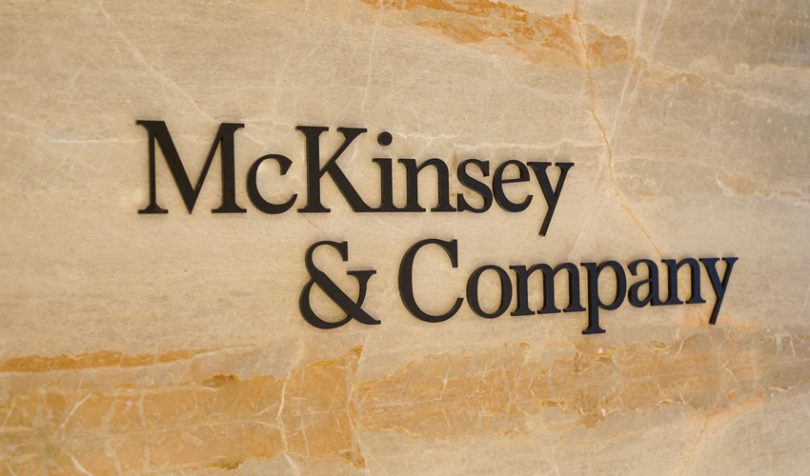McKinsey & Co published an article analyzing retail banking’s cautious approach to blockchain, especially in comparison to investment banks. The latter are moving ahead to streamline back-office systems for processing investment transactions after the trade is made. Because of the article’s focus on retail banking, McKinsey doesn’t mention commercial banking where trade finance has numerous blockchain initiatives.
McKinsey highlights the potential retail banking use cases as remittances, KYC/ID fraud prevention, and risk scoring. Surprisingly it omits mortgages. Silicon Valley startup Figure Technologies has raised $120 million so far and is aggressively targeting the sector in the U.S.
Blockchain remittances
The article states that cross border payments are around $600 billion annually and McKinsey estimates that it’s possible to save as much as $4 billion a year.
Although we believe that cost cutting can be achieved, Ledger Insights analysis has shown that most savings forecasts tend to be overstated. According to the World Bank, 2018 remittances were $689 billion. And the World Bank estimates that the average cost of remitting $200 is 6.94%. If you use that figure, you will arrive at a cost of remittances of $47 billion, so McKinsey’s savings appear reasonable.
But the percentage cost figure is deeply flawed because detailed data is not available to the World Bank. We suspect the real number could be very significantly less than half of that.
According to the World Bank, weighting the figure by source and destination, it’s more like 5.2%. But the components within the 5.2% are also flawed. They use a simple average of available quoted rates.
And the high figures in the World Bank statistics invariably relate to using cash on either end of the transaction. It’s only by encouraging less cash that substantial savings will be achieved.
As an example, we explored the U.S. to India corridor, which has a simple average of 2.88% from 30 offerings for sending $200. Nine of the thirty were internet or cashless both ends and the simple average here was 1.37%. But the four cheapest were 0.52% or less. It’s reasonable to assume that the four lowest ones are likely to be popular. And 0.52% is less than a fifth of the headline rate of 2.88%.
Back to the McKinsey report, they highlight the Ripple – Santander payments initiative in 2018 and JP Morgan’s Interbank Information Network, which initially focused on resolving compliance issues which often hold back cross border payments.
McKinsey state that one of the barriers relates to transparency on some networks. It suggests tokenization may be a solution. It also pointed to a lack of fungibility between crypto assets and fiat currencies holding back real-time settlement. The use of stablecoins is a solution but still requires correspondent banks to make the fiat conversion.
Blockchain KYC
The article explores KYC and makes some bold predictions. It estimates savings of $1 billion in operating costs, a reduction of $2 – $3 billion in regulatory fines, and $7 – $9 billion savings from lowering fraud.
But McKinsey says there are numerous challenges. These include capital costs in switching from in-house to shared systems; who is accountable for incorrect data if banks share KYC information; the need for standardization and extensive networks to achieve economies of scale; and whether a bank is willing to take the lead in creating a utility where they can’t reap any competitive advantage.
Blockchain challenges
Finally, McKinsey summarizes the top challenges. The first is the switch from fiat currency to digital assets has too much friction. It suggests a Central Bank Digital Currency as a solution.
Secondly, regulation needs to evolve to provide greater certainty. Thirdly, it states that customer identities should be created on the blockchain to enable real-time loan decisions, but doesn’t mention the associated privacy concerns.
And finally, executives need to be convinced of the long term blockchain benefits, which are lower costs, less friction and a safer retail banking system.






